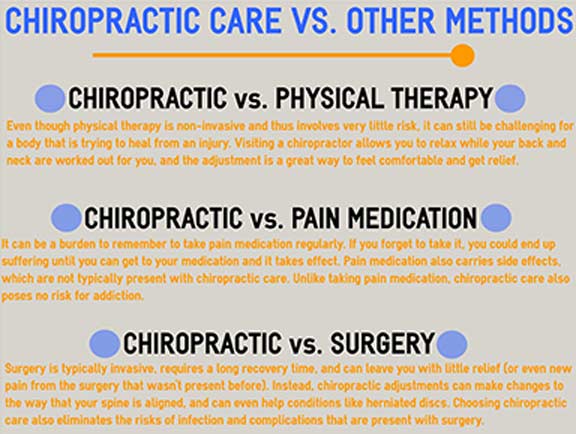Translating Pain In The Back: What It Reveals Concerning Your Health And Wellness And Common Symptoms To Look For
Translating Pain In The Back: What It Reveals Concerning Your Health And Wellness And Common Symptoms To Look For
Blog Article
Web Content Author-Patton Jensen
If you're experiencing pain in the back, your body could be trying to tell you something more than just discomfort. The way your back feels can give useful ideas concerning your general wellness. Recognizing the specific sort of pain you're really feeling and any type of accompanying signs and symptoms is vital to unraveling the secret behind your pain. Allow's discover the typical problems and signs associated with different kinds of back pain to clarify what your body may be signaling.
Types of Back Pain
When it comes to neck and back pain, there are different types that you may experience. One usual type is muscle discomfort, usually triggered by overuse, pressure, or injury to the muscles and ligaments supporting the spine. This sort of pain can range from mild discomfort to serious and incapacitating discomfort.
One more kind is nerve pain, which can arise from conditions like herniated discs or sciatica. Click Link provides as a sharp, shooting sensation that radiates down the leg.
Joint pain in the back can originate from concerns like joint inflammation or sacroiliac joint disorder. This type of pain is usually really felt in the reduced back and can be aggravated by specific movements.
Additionally, neck and back pain can be connected to architectural problems such as back constriction or vertebral cracks. Understanding the kind of pain in the back you're experiencing is important in establishing the proper therapy and monitoring methods.
Common Symptoms to Watch For
Moving beyond the numerous types of pain in the back, it is very important to recognize the common signs that can signal underlying problems.
Persistent back pain that intensifies with movement or at night can suggest a more major problem. Tingling or tingling in https://chiropractordoctormeaning17394.wizzardsblog.com/30646198/utilize-the-power-of-chiropractic-like-improve-your-sports-efficiency-and-uncover-the-secrets-behind-this-game-changing-link or feet, especially when accompanied by weak point, could indicate a nerve-related issue. If you experience abrupt weight reduction together with pain in the back, maybe an indicator of a more systemic problem.
Take note of any changes in bladder or digestive tract function, as this could be linked to spine compression. High temperature, cools, or night sweats in conjunction with neck and back pain might signify an infection. Keep an eye out for pain that radiates down one or both legs, potentially indicative of sciatica.
Wellness Conditions Linked to Neck And Back Pain
If you deal with neck and back pain, it's critical to understand the prospective health and wellness problems linked to this discomfort. Neck and back pain can be a signs and symptom of numerous underlying issues, consisting of muscular tissue stress, herniated discs, osteoarthritis, spinal constriction, and even conditions like kidney rocks or infections.
Muscle mass strains prevail and usually result from raising heavy items or unexpected motions.
Herniated discs happen when the soft cells between vertebrae protrudes, creating nerve inflammation.
Osteoarthritis, a degenerative joint disease, can bring about neck and back pain as cartilage wears down.
Spinal stenosis, the narrowing of the spine canal, can tax nerves.
Kidney rocks might trigger intense pain in the back if they relocate right into the urinary system tract.
Infections like spine osteomyelitis can likewise manifest as back pain. Understanding these possible health conditions can help you seek suitable treatment and monitoring for your neck and back pain.
Final thought
So, next time your back injures, take note of the type of pain and going along with signs. It could be a signal from your body about underlying wellness conditions like muscle pressure, nerve issues, joint problems, or even architectural concerns. By recognizing these indications, you can take proactive steps to address the origin of your pain in the back and improve your general health and wellness.
